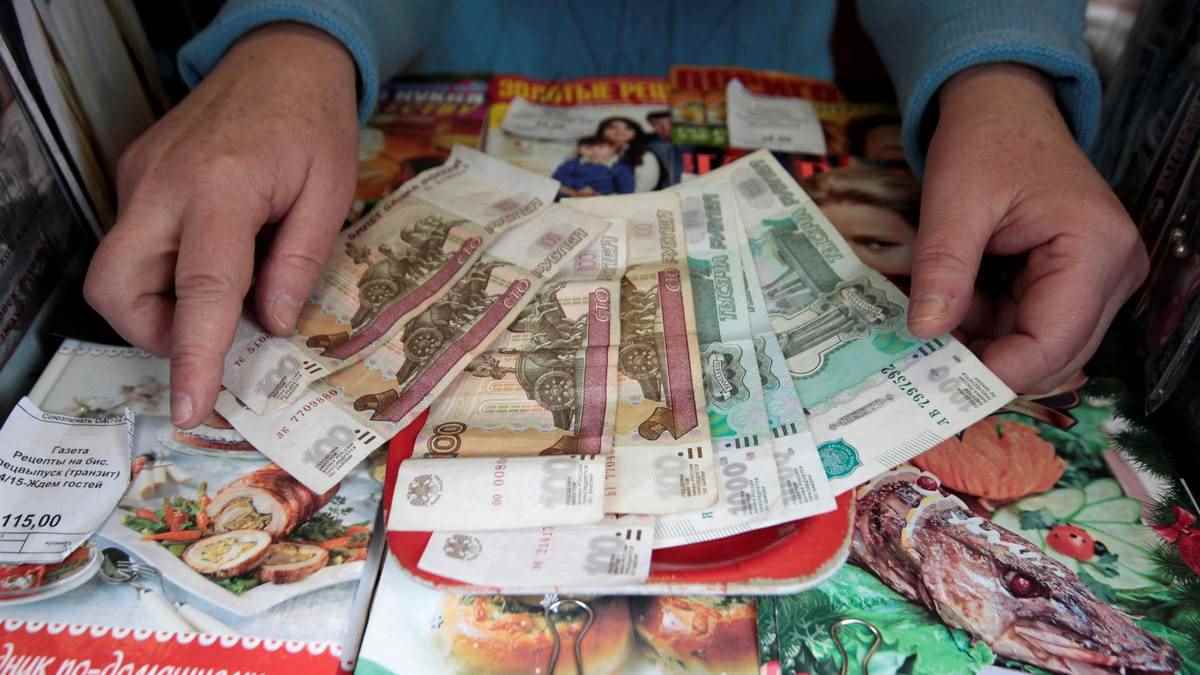On Tuesday, the Russian currency reached the strongest level against the dollar since February 2018. Against the euro, the exchange rate has not been better for the ruble since April 2017. Currency analyst Nils Kristian Knudsen at Handelsbanken believes the revenge for the ruble can be seen as a political victory in Russia. – You see that the exchange rate has been manipulated, but at the same time you can use the currency as proof that you are strong internally and vis-à-vis the rest of the world, he says to NRK. For the time being, President Vladimir Putin does not have to worry about the ruble after several measures to manipulate the country’s currency. Photo: Ramil Sitdikov / AP War-torn currency The exchange rate says what the country’s money costs, measured against another country’s money. It often reflects on the state of the economy. Russia’s currency is affected by defense policy. Both after the Chechen war in the 1990s, and after the invasion of the Crimean peninsula in 2014, the ruble collapsed. When the Ukraine war broke out, the same thing happened again: one dollar went from costing 76 to 138 rubles. But this time the ruble has shaken off the war effect in express speed. Tuesday cost a dollar down to 55 rubles. The ruble is thus far stronger than before the war broke out, and is one of the few currencies that has become stronger against the dollar in the last year by almost 30 per cent. Knudsen points to two reasons in particular why the ruble has become stronger: Russia must drop goods from abroad Normally, an economy will both sell and buy its own currency. But the sanctions mean that Russia can not buy goods as before from abroad. When much of the imports have disappeared, there will be less exchange from rubles to other currencies, Knudsen explains. Then the ruble becomes “artificially” strong. Currency analyst Nils Kristian Knudsen at Handelsbanken. Photo: Handelsbanken – Then you do not sell your own currency to import anymore. Transactions that are intended to weaken own currency and strengthen foreign currency will disappear, he says. This is how Russia has tried to stop the ruble fall When the war broke out, Russian authorities took several steps to curb the landslide in the country’s currency, and to stabilize the economy: Source: The Russian Central Bank. High oil and gas revenues On the other hand, trade out of the country yields near record high oil and gas revenues. – Exports from Russia are still going well. They sell gas and oil at high prices, says chief economist Harald Magnus Andreassen in Sparebank1. Elvira Nabiullina has controlled Russian monetary policy since 2013. She has worked closely with President Vladimir Putin throughout the 2000s as his assistant and trade minister. Photo: SERGEI KARPUKHIN / Reuters While central bank governor Elvira Nabiullina has taken several steps (see fact box) to raise the ruble exchange rate, President Vladimir Putin has come up with an unusual demand: European countries must exchange euros for rubles to pay for Russian oil and gas . – Basically, it is quite crucial for the price in the market to be so strong. At the same time, many parts of the market are closed, so it will be an artificial situation, but the price will be high as a result, says Knudsen. Several countries, such as Finland and Poland, refused to pay in rubles and had their gas cut. The big buyers Germany and Italy said before the weekend that they agree to the demand, according to Reuters. Every day, countries have to buy billions of rubles of oil and gas to prevent Russia from cutting gas. – It also means that as long as there are no other alternatives, at least not in the short term, this situation will persist, says Knudsen, and points out that Europe is dependent on Russian energy. Andreassen believes that it is the high incomes, and not the demand from Putin, that strengthens the ruble. – It is irrelevant whether the requirement is in rubles, because in any case there is a change from euro to rubles when the oil and gas are exported, he says. Struggling to get parts Since Russia sells valuable oil and gas abroad, but imports less, Russia is heading for the largest trade surplus ever in 2022. The trade surplus was NOK 1,152 billion in 2021, but will rise to 2,400 billion in 2022, according to an estimate from the Institute of International Finance, reproduced by Business news. But the large surplus shows a weakness in the Russian economy, according to Andreassen. – They may well have a surplus in the foreign economy, but that is not a strength. If you do not produce things, you will be poor. But it may well take a while before it becomes visible, he says. Chief economist Harald Magnus Andreassen in Sparebank1 Markets. Photo: Lise Åserud Goods and technology do not enter the country as before. Russian production has been falling for several months, and the industry is struggling to get hold of parts, according to the WSJ. – Car production stops, because the Russians are dependent on parts from abroad. They do not receive spare parts for foreign aircraft, which make up 90 percent of the traffic. This means that Russian society is struggling terribly, says Andreassen.
ttn-69
Strongest ruble in four years – NRK Norway – Overview of news from different parts of the country

